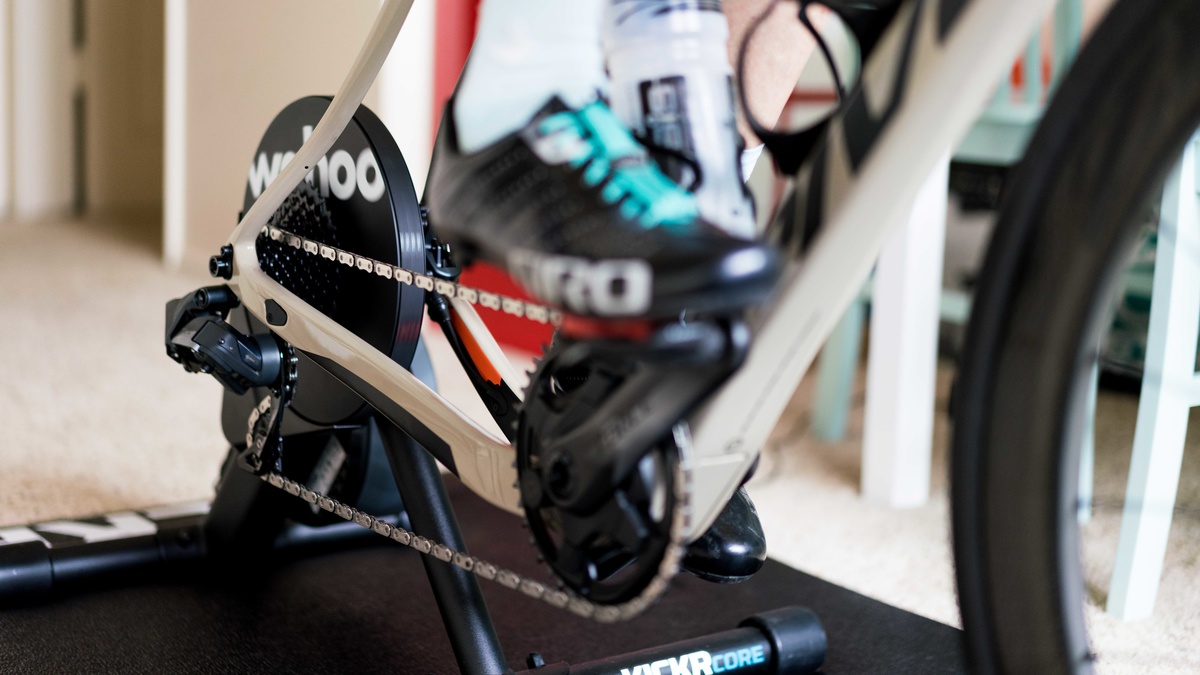La saggezza convenzionale sostiene che l’inverno è la stagione dell’allenamento di base, noto anche come Long Steady Distance (LSD). Questo significa innumerevoli ore di pedalata a un ritmo costante e tranquillo per settimane intere al fine di costruire una ‘base’ per le sessioni di allenamento più intense in primavera ed estate. Senza tutti quei chilometri di base, secondo questo pensiero, il tuo corpo non può assolutamente gestire tutta quell’intensità più avanti. Ma è vero?
Fortunatamente per l’atleta con poco tempo a disposizione, i presunti benefici dell’allenamento ad alto volume e bassa intensità riguardano più la tradizione e meno la scienza. Non fraintendeteci: fare lunghi e costanti chilometri di base può migliorare la tua forma fisica complessiva se hai molto tempo da trascorrere in sella, ma per quelli di noi che non hanno più di 20 ore a settimana per allenarsi, non è il modo migliore per strutturare il tuo allenamento invernale.
IL MITO DELLA CREAZIONE DI UNA “BASE”
Il problema con la tradizionale “fase di base” di molti piani di allenamento è l’impegno di tempo richiesto per vedere benefici reali. Per vedere qualsiasi ritorno sostanziale dalle uscite LSD è necessario dedicare un minimo di 16 ore a settimana, con alcune settimane che richiedono oltre 25 ore di allenamento. Hai davvero tutto questo tempo?
Mentre questa potrebbe essere un’opzione per i ciclisti professionisti a tempo pieno, è probabile che tu non sia in grado di uscire e allenarti così tanto. Per te, la pedalata LSD è una perdita di tempo — tempo che non hai.
Numerosi studi hanno dimostrato che quando gli atleti con un tempo di allenamento fisso passano da un allenamento che include sforzi ad alta intensità a un allenamento solo a bassa intensità, in realtà vedono una diminuzione in metriche critiche come il VO2 max (la capacità massima del tuo corpo di utilizzare l’ossigeno). Lo stress dell’allenamento innesca adattamento e miglioramenti nella forma fisica. Solo quando presenti al tuo corpo una sfida diversa farà dei cambiamenti per diventare più forte e più efficiente. Se sei un ciclista con alcuni anni di allenamento nelle gambe, allora fare alcune settimane di 10 ore di sole uscite Long Slow Distance ti porterà solo a perdere forma fisica.
Stai pedalando molto, ma stai diventando più lento.
Molti sfortunati ciclisti si sono convinti che fare fine settimana ad alto volume e bassa intensità durante l’inverno sia sufficiente per ottenere quei benefici dalla pedalata LSD. Mi dispiace dirtelo, ma non funzionerà. Perché l’allenamento LSD funzioni davvero devi fare quelle lunghe giornate almeno cinque volte a settimana. Quindi fare duri fine settimana e pedalare una o due volte durante la settimana per un’ora non sarà sufficiente.
COSA DOVRESTI FARE NELLA STAGIONE MORTA?
La domanda quindi diventa: “Come dovrei allenarmi durante l’inverno?” Il tuo allenamento fuori stagione dovrebbe includere:
- Sessioni che ti spingono davvero ai tuoi limiti di Potenza di Soglia Funzionale (FTP) e di Potenza Aerobica Massimale (MAP).
- Sessioni che sono impegnative ma… gestibili. Questo significa un tempo più lungo a o vicino all’FTP.
- Sufficiente riposo di qualità per prevenire l’affaticamento cumulativo. Considera lo yoga e un po’ di leggero allenamento incrociato.
PERCHÉ NON TI ESAURIRAI IN ESTATE
Puoi iniziare direttamente con gli intervalli senza avere una base? Non ti esaurirai quando arriverà l’estate? No. Non succederà.
Incorporare l’allenamento ad alta intensità nel tuo programma invernale non è il colpevole. È vero solo se spingi troppo forte, per troppo tempo, troppo spesso, e ti sovrallenamenti in primavera. Il burnout è di solito più probabile quando un ciclista è già impegnato in un allenamento ad alto volume che aggiunge l’allenamento ad alta intensità sopra di esso.
L’INTENSITÀ, NON LSD, TI RENDE VELOCE
Ci sono enormi benefici nell’allenamento a intervalli ad alta intensità. Entra, fai il lavoro, esci, riposa e ripeti. Lo usiamo perché funziona. Incorporando sforzi ad alta intensità nel tuo programma di allenamento invernale puoi continuare ad aumentare la tua forma fisica senza aumentare il volume, e uscire dall’inverno con velocità e resistenza per andare lontano.
“Di più è sempre di più, ma di più non è sempre meglio.”
Coach Neal Henderson
ALLENAMENTI CHE PROBABILMENTE NON STAI FACENDO
MA CHE DOVRESTI DAVVERO FARE
Un’altra area chiave su cui lavorare tutto l’anno – e una che la maggior parte degli atleti trascura – è l’allenamento neuromuscolare. A differenza del nuoto o della corsa che richiedono una buona tecnica, il ciclismo è un po’ più indulgente. Puoi “pedalare a quadrati” tutto il giorno e ancora andare veloce, anche se non in modo efficiente. Una delle più grandi differenze tra ciclisti d’elite e amatoriali è quanto efficiente sia la loro pedalata. Incorporando una varietà di esercizi di cadenza alleni i tuoi muscoli a contrarsi quando devono, e rilassarsi quando devono.
La stagione morta è anche un ottimo momento per iniziare l’allenamento di forza. Considera di aggiungere una serie di esercizi a peso corporeo che aiuteranno a costruire forza funzionale e coordinazione neuromuscolare. Questo si trasferirà in una migliore efficienza e velocità quando sarà il momento di mettere tutto il tuo allenamento al lavoro.
In definitiva, combinando un allenamento neuromuscolare di qualità con un pizzico di sforzi ad alta intensità e un assortimento di sforzi del tipo “questo fa schifo ma non è così male”, hai la ricetta perfetta per migliorare la tua forma fisica complessiva durante l’inverno mentre lasci abbastanza energie in modo da poter raggiungere tutti i tuoi obiettivi una volta che i manicotti e i copriscarpe vengono tolti.




